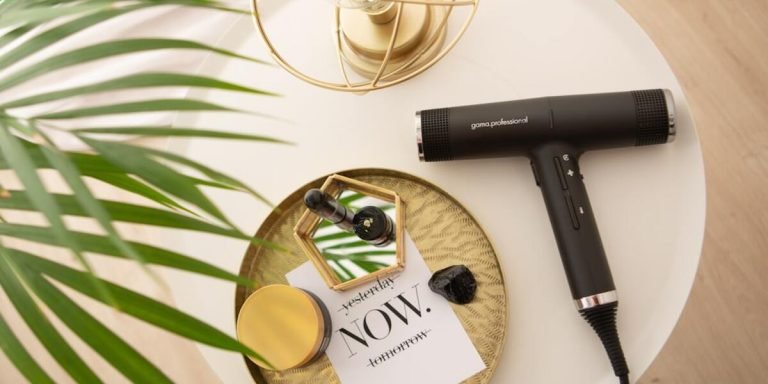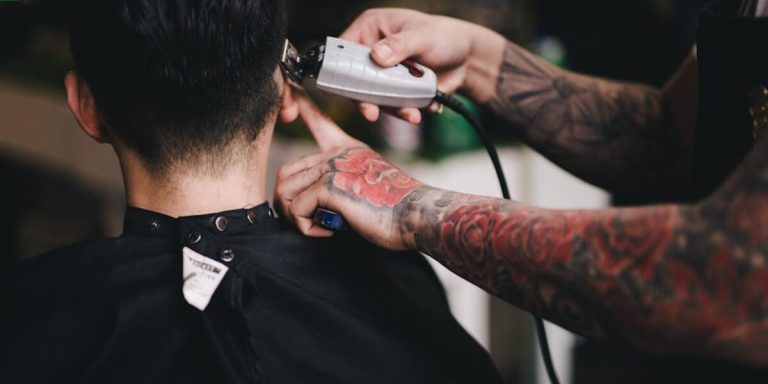Low Level Laser Treatment for Hair Loss: A Detailed Analysis and Review
Hair loss is a common problem faced by millions worldwide, often leading to lack of confidence and self-esteem. One revolutionary solution that has been picking up steam in recent years is “Low Level Laser Treatment for Hair Loss”. This technique uses low-level light therapy to stimulate hair follicles, promoting growth and reducing the pace of hair loss.
Lack of comprehensive information and ambiguous reviews scattered throughout the internet make it challenging for individuals to decide whether this treatment would suit them best or not. Thus, we feel compelled to provide you with an exhaustive analysis on Low-Level Laser Treatment for Hair Loss – its benefits, potential side effects, cost implications vs outcomes – all taken into account from reliable scientific studies as well as customer experiences.
Did you know?
Low-Level Laser Treatment can stimulate hair follicles to improve cell function, in fact, a 2014 double-blind study showed an average of a 39% increase in hair growth over a period of 16 weeks.
Understanding Low-Level Laser Treatment for Hair Loss
Low-level laser treatment, also known as LLLT, has emerged as a prominent hair loss solution in the recent times. In simple terms, it’s a non-invasive procedure that employs light-emitting diodes or lasers to stimulate scalp tissues and promote healthier hair growth. Users should note that this method isn’t an instant miracle cure for baldness; instead, it promotes healthier follicles for thicker and fuller looking strands over time.
The specifics of how low level laser treatment works are quite intriguing. The principle is similar to photosynthesis which occurs in plants—light absorbed by living cells causes stimulated cellular activity. When applied towards treating hair loss problems, energy from the device penetrates down into the scalp where it enhances blood flow thereby nurturing each follicle with more oxygen and nutrients needed for healthy development.
Common misconceptions about LLLT treatments should not be ignored—they are:
- Not exclusively for severe forms of alopecia
- Not a solution that provides immediate results overnight
The effectiveness of LLLT varies based on factors such as:
- Genetic makeup
- The stage at which the treatment begins
If you’re beginning your journey to combat thinning hair, arm yourself with knowledge about the latest technologies. Try out these revolutionary therapies today!
The Science Behind Laser Therapy and Follicular Stimulation
Low-Level Laser Treatment, often labeled as a breakthrough in hair loss treatment has been widely recognized for its promising results. The science behind this innovative procedure is quite fascinating and comprises two main aspects: laser therapy itself and the subsequent follicular stimulation.
The low level lasers used in these therapies are engineered to emit light at specific wavelengths. This “cold” light safely penetrates your scalp skin without causing any harm or discomfort. Once it reaches the weakened hair follicles, an interesting process begins – Follicular Stimulation.
Follicle stimulation primarily involves supplying energy directly to dormant or weak hair cells within the follicles through photo-bio-stimulation. This term may sound complex but simply put, it’s akin to photosynthesis that plants use for growth – converting light into life-giving fuel. Similarly, our body responds positively when therapeutic red-light is absorbed by molecules within our cells triggering enhanced cellular activity.
This heightened action stimulates inactive hairs back into their active stage of growth; augments blood flow ensuring more nutrients reach each strand while flushing out harmful DHT (Dihydrotestosterone), one of major culprits behind pattern baldness; detoxifies scalp by clearing away accumulated debris around follicles providing healthier environment for new strands to flourish.
Research studies have shown that Strategic application of Low Level Laser Light also aids increased protein synthesis which ensures stronger locks less prone towards breakage hence leading towards lesser shedding over time.
Comparing Effectiveness: LLLT versus Traditional Hair Restoration Methods
Low-Level Laser Treatment (LLLT) for hair loss has been gaining significant attention in the past decade, making it a viable alternative to traditional hair restoration methods. This section aims to provide an insightful comparison between LLLT and conventional treatments, highlighting their effectiveness based on scientific research and empirical evidence.
Traditional methods of treating hair loss typically involve surgical procedures or medication. Hair transplantation surgeries have long been considered as one of the most effective solutions but come with drawbacks like high cost, potential side effects such as scarring or infection, and natural aging can still progress resulting in further balding post-surgery.
Medications such as minoxidil (Rogaine) or finasteride (Propecia), are commonly prescribed by dermatologists globally. While they’re less invasive than surgery, these medications may lead to undesirable side effects including scalp irritation from Rogaine or sexual disorders linked with Propecia use.
Low-level light therapy stimulates cell function, strengthens existing follicles, and promotes healthier hair growth without the need for surgery or the risk of allergic reactions from topical treatments. Recent studies have shown positive results for safety and effectiveness, especially in treating male pattern baldness, highlighting its value in trichology.
Step-by-Step Guide to Undergoing Low-Level Laser Therapy
Beginning your journey with low-level laser therapy (LLLT) for hair loss, it’s crucial to know that this non-invasive treatment involves the use of medical-grade lasers. These emit a light which can stimulate cell growth and significantly increase blood flow on the scalp. This method ensures an enhanced supply of nutrients to your follicles encouraging better hair growth.
Before starting LLLT, you must consult with a dermatologist or trichologist who specializes in treating hair loss conditions. They can assess if you’re an ideal candidate for this procedure based on factors such as the nature and degree of your baldness as well as overall health condition. Moreover they will guide through all possible options available so that you make an informed decision about undergoing this specific treatment for hair loss.
Once considered suitable, typically sessions are scheduled at least twice a week over several months either in-office or at home depending upon convenience and individual requirements proposed by experts.. During each session lasting between 15-30 minutes , laser combs or helmets perform their work emitting wavelengths directly onto scalp promoting reduction in inflammation thereby fueling up healthy regrowth.
The key here is consistency – regularity drives results when it comes to LLLT! It’s important not only during initial stages but also once desired outcomes are achieved; one must continue maintenance treatments otherwise progress could reverse back rapidly leading again towards concerning thinning patterns.
Preparing for Your First LLLT Session: What to Expect
Entering the world of low level laser therapy (LLLT) can feel a bit daunting, but let us simplify it for you. Here’s what you need to know when preparing for your first LLLT session.
To begin with, understanding the procedure is key. In essence, LLLT uses medical-grade lasers or light emitting diodes (LEDs) that emit controlled levels of red light onto your scalp directly addressing troubled areas by stimulating blood flow and encouraging stalled follicles back into productive growth cycles.
Preparation includes ensuring an unobstructed path for these beams to reach deep into your scalp tissues where they most matter – so having clean and relatively dry hair would certainly be advantageous ahead of each session.
Comfortable wear should also not be overlooked during therapies that might run anywhere between 15-30 minutes depending on individualized treatment plans tailored around unique user needs.
While there aren’t many reported serious side effects linked with use – some users may experience temporary shedding heralding normal cycle resets post-treatment which typically resolves independently after continued application.
Post-Treatment Care and Maximizing Results of LLLT
After completing your low-level laser therapy (LLLT) for hair loss, it is essential to take certain steps to enhance the treatment’s impact and maintain its results. This post-treatment care is not challenging or time-consuming but significantly contributes towards maximizing LLLT’s effectiveness.
Firstly, continue maintaining a healthy lifestyle – this includes good nutrition and hygiene habits. A balanced diet rich in vitamins E, B7 (biotin), and C can help strengthen hair follicles from within while practicing good scalp hygiene ensures an optimal environment for hair growth.
Secondly, stay consistent with the recommended schedule of treatments as stated by your healthcare professional. Despite seeing improvements in thinner areas or lessened shedding after initial sessions of LLLT treatment in 2023, don’t get complacent; consistency plays a pivotal role when undergoing low-level laser therapy for visible long-term gains.
Next up on the list: minimize exposure to damaging practices like heat styling tools & chemical-based products that could counteract achieved progress by causing additional stress on treated areas.
To further reinforce new growth stimulated through LLLT process frequent gentle massaging motions onto your scalp enhances blood circulation aiding nutrient delivery at targeted zones better supporting healthier fuller looking strands over time.
Evaluating the Long-term Benefits and Considerations of LLLT for Hair Regrowth
Long-term benefits and considerations of Low-Level Laser Therapy (LLLT) plays an important role in the hair regrowth journey. Traditionally, therapies such as medications or transplants have been used to fight against hair loss, but recent advancements like LLLT are offering a new ray of hope for those struggling with thinning locks.
Many clinical studies affirm that consistent use of low-level lasers promotes healthy hair growth by fostering cellular rejuvenation and improving blood flow around hair follicles. It is considered safe without any significant side effects reported so far. Users across diverse age groups report noticing enhanced thicker & shinier manes after regular sessions spanning several weeks to months, thereby affirming its efficacy in long-term usage.
Before you embark on this treatment option, evaluate some critical aspects carefully. You need patience to see visible results from LLLT therapy, as improvements appear gradually over time, unlike the immediate outcomes from invasive procedures like grafts or implants.
Consider cost as another determinant. While LLLT therapy is non-invasive and pain-free compared to surgical alternatives, it’s neither inexpensive nor covered under typical health insurance plans; extensive treatments could strain your budget.
Monitoring Progress: Tracking Hair Regrowth Over Time with LLLT
To monitor progress, some vital steps should be taken over time.
1. Regular Photos: Take regular photographs of your scalp from various angles under uniform lighting conditions. Doing this weekly or monthly assists to notice slight changes that might not be immediately clear from just looking at a mirror.
2.Left-Right Symmetry: Always consider left-right symmetry while assessing picture-based results; sometimes one side may show quicker progression than the other due to varying exposure levels during treatments.
3.Measuring Thickness & Density: The thickness and density are another two aspects important in evaluating success where improvements with LLLT could induce more robust strands along with denser growth patterns even before visible lengthening occurs.
4.Consulting Professionals Regularly : Routine appointments with professionals help document progress accurately using dermatological tools like trichoscopes designed explicitly for such assessments, providing highly detailed insights into follicular health improvements unseen by naked vision alone..
5.Patience Is Key: Hair cycles tend to vary widely among individuals so notable differences can take up several months depending on existing baldness severity as well personal resonse-rate towards LLLT methodology employed.
Cost-Benefit Analysis: Is LLLT a Viable Financial Investment in Hair Loss Management?
Low level laser treatment (LLLT) has gained considerable attention in recent years as a non-invasive procedure for hair loss management. But is it worth the financial investment? Deciding on this requires an understanding of both its long-term benefits and potential considerations.
When speaking about LLLT’s effectiveness, research suggests that consistent use does lead to significant hair regrowth over time. The science behind LLLT revolves around photobiomodulation – stimulating your cells with light energy to recharge follicles and spur growth. In practice, many individuals report noticeable improvements after several months of regular sessions.
Another notable advantage lies within the non-surgical nature of low level laser therapy making it perfect for those scared by the idea of invasive treatments like transplants or medication side effects. Moreover, considering ease-of-use where most devices are designed for home application only adds appeal leaving you devoid any cumbersome clinic visits .
However, when evaluating cost-effectiveness we need to factor in how often replacement units are needed due their limited lifespan – usually between 1-5 years depending upon usage rate and model quality – adding up costs incrementally overtime . Additionally , market price range can vary significantly which could make initial investments steep .
Conclusion
In sum, the intricacies of low level laser treatment for hair loss are vast and diverse. It may seem daunting navigating through this sea of information but rest assured – knowledge paves the way to better choices. So far, we’ve dissected studies, analyzed user reviews and brought you a comprehensive overview that should empower your decision-making.
Vibrant locks might not be as elusive as they once seemed! For more explorations about “Hair Loss Treatments”, our website is only a few clicks away. Immerse yourself in an array of well-researched articles relevant to your needs; let us accompany you on your journey towards healthier tresses.







